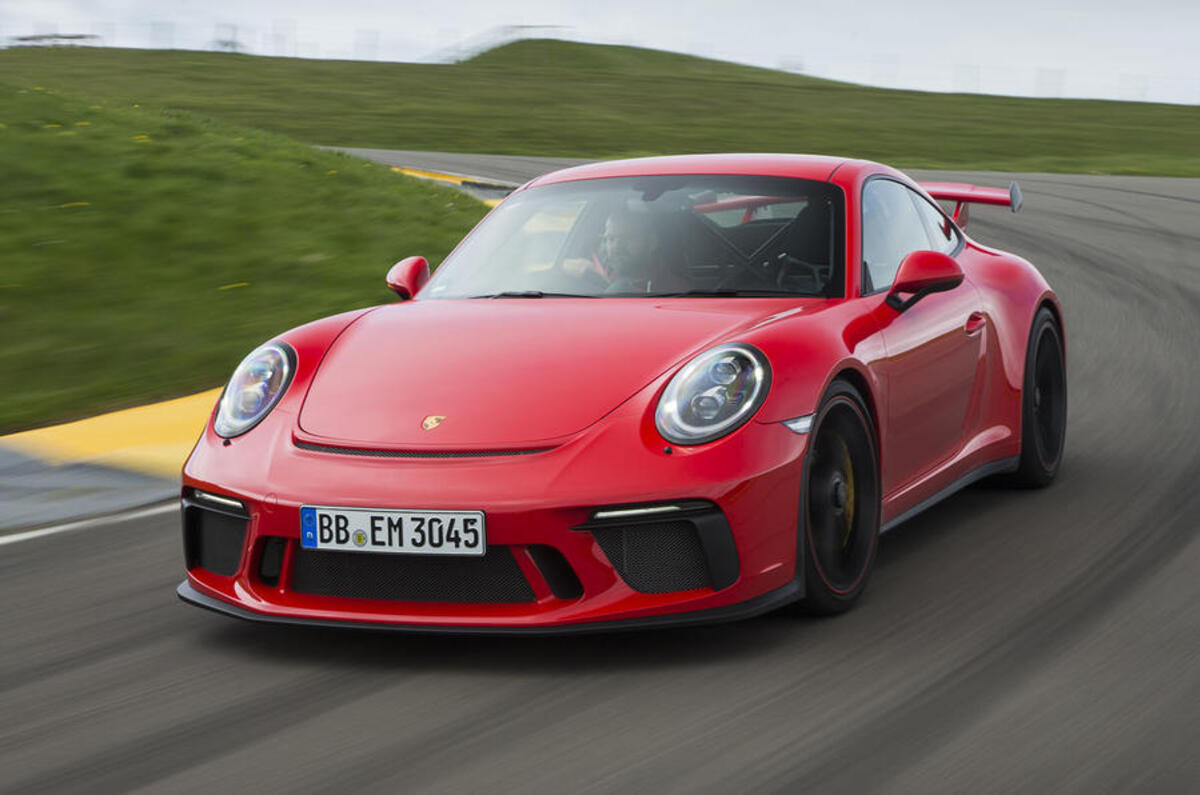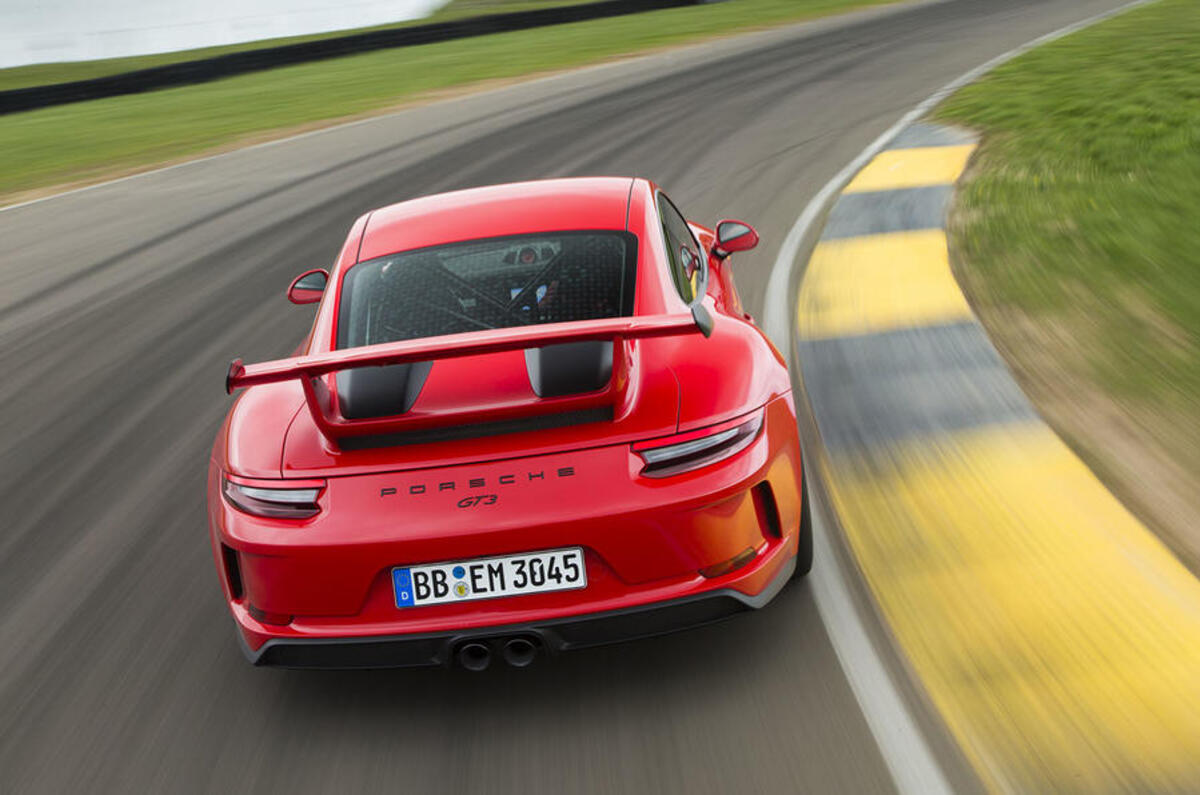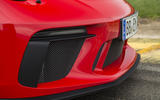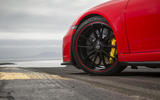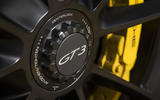Used Porsche 911 GT3 2017-2021 review
10
Now that it has dropped in price to more accessible levels, is it time to invest in a 911 GT3 before it becomes a modern classic?


Published:
1 February 2025
Find a car reviewMakeAbarthAC CarsAC SchnitzerAehraAircraft carrierAiwaysAlfa RomeoAllardAlpinaAlpineAnalogue AutomotiveArielAscariAston MartinAudiBACBentleyBeyonCaBizzarriniBMWBorgwardBowlerBrabusBristolBrookeBugattiBYDBytonCadillacCallawayCampagnaCaparoCaterhamCatonChangan AutoChevroletChryslerCitroenCooper (2001-2006)CupraDaciaDaewooDaihatsuDallaraDavid BrownDe TomasoDeLoreanDenzaDodgeDonkervoortDSDysonEagleElectrogenicElementalElfinEternitiFarbioFerrariFiatFiskerFordGBSGeelyGenesisGinettaGMCGordon Murray AutomotiveGreat British Sports CarsGreat WallGT LE50GTO EngineeringGumpertGunther WerksGWMHennesseyHiPhiHispano SuizaHoldenHondaHongqiHuman HorizonsHummerHyundaiIFRIneosInfinitiInvictaIsuzuItalDesignIvecoJaecooJaguarJannarellyJCBJeepJIAKamm ManufakturKen OkuyamaKGMKiaKimeraKingsley CarsKoenigseggKTMLadaLamborghiniLanciaLand RoverLeading EdgeLeapmotorLEVCLexusLightyearLincolnLMCLotusLucidLynk & CoMahindraMarcosMarlinMaseratiMastrettaMaxusMaybachMazdaMcLarenMercedes-AMGMercedes-BenzMercedes-MaybachMG MotorMiaMicroMikaMiniMitsubishiMitsuokaMK SportscarsMobilizeMorganMS-RTMSTMunroMurrayNextEVNioNissanNobleOldsmobileOmodaOpelPaganiPaul StephensPembleton Motor CompanyPeroduaPeugeotPininfarinaPolarisPolestarPorschePragaProdriveProtonQorosRadfordRadicalRamRed BullRenaultRevologyRevolutionRimacRiversimpleRivianRMLRodinRoeweRolls-RoyceRoverRS6 GTRufSaabSaturnScoutSeatSenovaShelbySilenceSinSkodaSkywellSmartSmit OlethaSpartan Motor CompanySpykerSRTSsangyongSSCSubaruSuperformanceSuzukiTataTeslaTheon DesignTigerTolmanToniqTouring SuperleggeraToyotaTriumphTushekTVRTwistedUniqueVauxhallVencerVeritasVinfastVolkswagenVolvoVoyahVuhlWellsWestfieldWiesmannXiaomiXpengYangwangZeal MotorZeekrZenosZenvoZolfeZoyteModel
Find Used Porsche 911 GT3 2017-2021 review deals

Other Services

The 911 GT3 released in 2017 is heralded as one of Porsche’s greatest hits and it still quickens pulses and turns heads today.
So high was demand when it was new that you could not get your hands on a 991.2 (Porsche speak for the facelifted seventh-generation 911) GT3 for love nor money.
Some buyers cashed in and immediately flipped their cars to make a profit, so many GT3s quickly reappeared on sale – but for around £50,000 to £70,000 more than their list price.
It’s easy to see why demand outstripped supply: this sports car delivers unwavering grip, poise and balance, both on track and off it. But now that it has dropped in price to more accessible levels, is it time to invest in a GT3 before it becomes a modern classic?
Cast a cursory glance at this limbered-up 911 and you would be forgiven for mistaking it for its predecessor.
A light nip and tuck to the front and rear bumpers are the only visual changes, but peel back the skin and you will see we are dealing with a very different beast.
Nestled in the shadow of that hulking rear wing is a 4.0-litre flat-six engine rather than a 3.8-litre one.
The swap was made to address the reliability issue that plagued the pre-facelift ‘991.1’ and it’s a key reason why you should find the extra dosh for a post-2017 model.
The 4.0-litre lump isn’t just a carryover from the GT3 RS or spellbinding 911 R, either. It is a motorsport-derived 911 Cup car engine with new crankshaft, pistons, liners and bigger seals.
Back to top
The bigger motor also ditches its predecessor’s hydraulic valve lifters, which, in combination with the other mods, means it can spin more freely – all the way to a screaming 9000rpm redline.
Peak power comes in at 8250rpm, so you have to work it quite hard, but how you get up there is your choice: you can have a snappy seven-speed PDK or a sensationally tactile six-speed manual gearbox.
The quicker acceleration on offer with the auto makes more sense if you’re an avid track-day driver. But for the complete GT3 experience, it has to be the more engaging manual, which is also slightly lighter and gets a conventional limited-slip differential for an extra hit of playfulness.
Your choice of brakes also depends on your GT3’s intended use: carbon-ceramics are best for road driving as they’re lighter, but track cars should have steel items because they’re cheaper to replace.
And if you don’t want some of the car’s racier cues, then you might wish to consider the more reserved Touring version, which features a GTS-style hidden rear spoiler instead of a fixed wing.
Around 50 right-hand-drive Tourings made their way to the UK so they’re exceptionally rare and command a hefty premium over the bewinged car.
But if your heart is set on a Touring, performance car specialist Litchfield can convert a standard GT3 into one using Porsche-approved parts for just under £18,000 – a relative bargain considering the £200k you would have to fork out for a factory car.
The cabin of the GT3 is pure motorsport. Slide into the 918-style bucket seat of a car fitted with the Clubsport package (which also added a roll-cage, harness and fire extinguisher) and you are swaddled in carbonfibre and Alcantara trimmings.
Tourings, meanwhile, are a little more luxurious, with mostly leather-trimmed elements and Comfort seats.
There are plenty of Clubsport models in the classifieds, but bear in mind that the cage takes up valuable luggage space, which you may want to use.
Back to top
Yes, the GT3 is the sort of sports car that you can drive to the Nürburgring and set a killer lap time, and then carry on to the south of France for a holiday without breaking a sweat.
https://www.drivenbuy.co.uk/autocar?car_make=porsche&car_model=911-gt3-2017-2021&review=used&source=https://www.autocar.co.uk/car-review/porsche/911-gt3-2017-2021
Verdict

Model tested:
Rating: 10
Used Porsche 911 GT3 2017-2021 review
Sensational 911 GT3 engages you on the road and excels on track
Good
4.0 litre engine sings all the way to 9000rpm
Sweet handling, with excellent poise, balance and agility
Can have it with a manual gearbox
Bad
High power band hard to unleash on road
Touring model is rare – and more expensive
Not much else
RELIABILITY
Pros
4.0-litre engine improved reliability over previous 3.8-litre unit
Good Porsche dealer network makes it easier to get genuine parts
Cons
Parts are expensive to replace
Watch for modified cars that have been given power upgrades
Is the Porsche 911 GT3 reliable?
Overall, the 991.2-generation GT3 is a reliable car and far more durable than the pre-facelift model it replaced.
Early 991 GT3s were at risk of catching fire due to an issue relating to the engine’s connecting rods, and after a number of incidents, Porsche recalled all cars to rectify the problems that afflicted the 3.8-litre unit.
While the 4.0-litre engine isn’t totally free of faults, it is much more robust thanks to its use of stronger materials – many owners have covered big miles without fault.
Considering how highly strung the engine is, we’d recommend a full Porsche warranty for peace of mind.
Engine: The 4.0-litre is far more robust than the 3.8-litre unit, but there have been a few cases of engine failure, variously attributed to causes such as oil starvation or low cylinder compression. Porsche often covers engines under warranty, but be sure to check the service history.
Gearbox: Issues with both the manual and PDK ’boxes are rare but make sure gearshifts are smooth because a replacement for either is obscenely expensive.
Brakes: Be wary of cars fitted with carbon-ceramic brakes. Their stopping power is unrivalled but they can cost between £10k and £13k to replace. Make sure they’re not worn or pitted.
Tyres: Check they’re in good order, with no bald spots or uneven wear. Michelin Pilot Sport Cup 2 items are great for track use and Michelin Pilot 4S tyres are ideal for the road. A full set of both won’t come cheap, mind.
Body: Inspect the underside of the car for any scuffs and scrapes, especially if it has been used on the track.
Interior: Full-carbon bucket seats are snug and secure but check that the hip bolster nearest the door hasn’t been worn down by the previous owner getting in and out.
The manual gearknob plastic can break and fall off, although you can easily source a replacement from Porsche or via an independent specialist.
An owner’s view
Robin Titterington: “After driving my friend’s GT3 RS, I knew it was time to buy one myself. The RS was a bit over the top for me, so I bought a 991.2 GT3 with Comfort seats and carbon-ceramic brakes. It’s a brilliant car and one that’s better suited to ‘normal’ driving.
My car’s Michelin Pilot Cup 2 tyres generate a lot of noise so I intend to swap these for Pilot Sport 4s. For peace of mind, I bought an extended warranty, but I’ve had no issues so far. It’s an exceptional car and I’d recommend it to any sports car enthusiast.”
Also worth knowing
Not all GT3s have full-bucket seats. If you’re after a more road-biased car, you’ll have no trouble finding a GT3 with electric Comfort seats. Alternatively, there are carbon-backed Sport seats, which look superb and are reasonably comfortable.
The Clubsport package comes with a full roll-cage and a fire extinguisher, so it is worth considering if you plan to use your car for track days.
DESIGN & STYLING
Pros
Retuned suspension for better ride and handling
Subtle styling tweaks added more aggressive look
Cons
Optional carbon-ceramic brakes are expensive
Same kerb weight as before
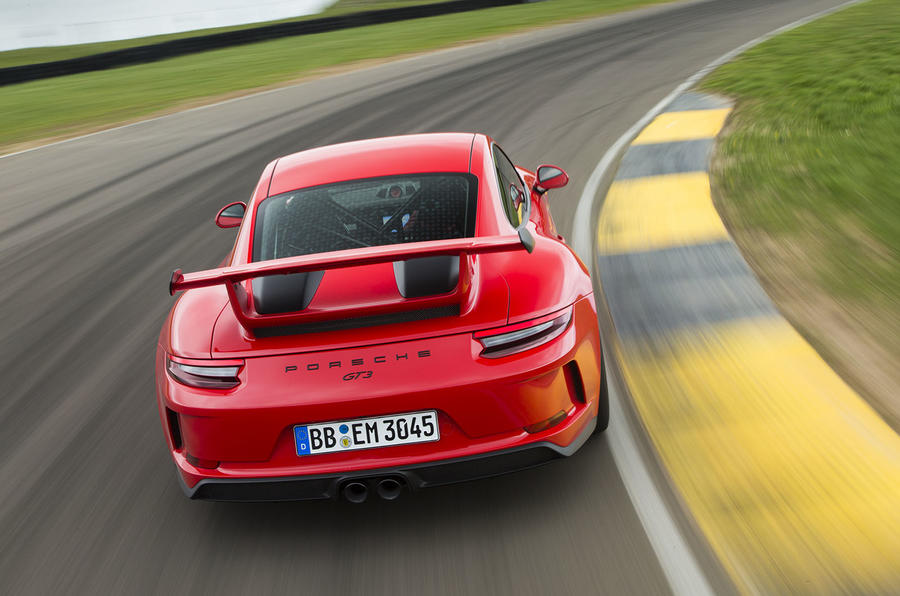
Compared to the 991.1 model, the facelifted car didn’t look significantly different.
At the front there was a new bumper, which was a kilogram lighter than the one that went before it, partly becuase it used a lighter material and partly becuase it had more holes to let air into the radiators and cool the engine.
Moving back, slowly, there were subtle front suspension changes, which were stiffened to improve steering response and high-speed stability.
The wheels, and the brakes inside them, were the same and you could have steel rotors or optionally carbon-ceramic discs.
Porsche GT boss Andreas Preuninger said that, for the road, the carbon-ceramics were ideal because they were lighter, but if your car was to be used as a track hag, then you should have steels because they’re cheaper to replace.
Further back still, the rear suspension was mildly tweaked again with influence from the GT3 RS.
Helper springs were added at the back, which allowed the main springs to be lighter, and the dampers were retuned all round to make the GT3 both ride better on the road yet be more taut on a circuit than before when you plonk them into firm mode. Active rear steer was carried over, too.
At the very back was a new rear bumper, made from the same weight-saving material as the front one, while the rear spoiler was the same as before but mounted 20mm further back and 10mm higher.
Combined with underbody aerodynamic tweaks, it improved downforce by 20 percent while not affecting drag at all.
INTERIOR
Pros
Neatly appointed inside with premium materials throughout
Slim, tactile and clutter-free steering wheel
Cons
Roll-cage limits space for luggage in the back
Full bucket seats aren’t that comfortable on a long run

Inside, things were broadly similar, although Porsche added an upgraded infotainment system and there was less sound-proofing, because there had been a few kilograms added to the body – some extra plates to increase crash stiffness.
Despite the additional weight, Porsche managed to maintain the same 1403kg weight as the last GT3.
The steering wheel was bereft of buttons, wonderfully, and you could choose between sculpted carbonfibre race seats or more comfortable GTS-style electric seats.
Clubsport models got a roll-cage, fire extinghuisher and harnesses for an even more track-focused interior layout.
ENGINES & PERFORMANCE
Pros
Mighty 4.0-litre engine screams all the way to 9000rpm
Can be had with slick PDK or more immersive manual gearbox
Cons
Arguably too much performance for the road
Not much else

And under all this is, of course, was the engine.
Porsche swapped the 3.8-litre flat-six in favour of a 4.0-litre unit, which made 493bhp (a round 500hp), but the GT division didn’t simply lift the same engine from the 4.0 GT3 RS or 911 R and bolt it into the GT3.
It was all but identical to a 911 Cup car’s engine. There was a different crankshaft, with bigger seals. There were revised pistons, with different liners and an ever more slippery coating on them.
The most significant change was that there were no hybraulic valve adjusters inside the head, which reduced the oil pressure you needed to lubricate them.
Porsche also used upgraded materials so that the valves wouldn’t go out of adjustment even if you ran one on a dyno for 200,000 miles.
The tweaks to the powerplant meant that the engin spun more freely to a rev limit of 9000rpm, higher even than the GT3 RS and R could. Peak power came in at 8250rpm; torque, and only 339lb ft of it, at 6000rpm.
You had to work the engine to get to it, which you could do via the medium of a seven-speed PDK dual-clutch gearbox or, wonderfully again, the biggest, baddest, shockingest and greatest news of all: the GT3 had again become available with a manual gearbox.
Beyond a 10kg difference between the two – the manual car was lighter – the other difference was that the PDK required a hydraulic pump, which also drove an electronically controlled limited-slip differential.
The manual gearbox went without the pump and therefore got a conventional mechanical limited-slip differential.
Given its near-instant shift times and the advantages of wheel slip being electronically monitored, a PDK-equipped car was faster on a circuit, but the manual was arguably more fun – a bit more liberal, loose and content to let things slide.
RIDE & HANDLING
Pros
Firm, accurate steering
Impeccable poise, agility and balance
Cons
Can bleed into understeer if you don’t manage the front end

If you had been planning no track work at all, the chances were you wouldn’t have gone for a GT3 variant of a 911, but the ride wasn’t half bad.
The GT3 felt compliant, composed, and tight, plus there was always the reassurance that even if you hadn’t specified the nose lift and used it, at least Porsche had used flexible rubber, not carbonfibre, in the front of its cars.
The steering was firm and accurate and self-centred nicely.
The engine was smooth, and the addition of a dual-mass flywheel improved refinement – the GT3 RS and R had a lighter, single-mass option – but response still seemed to border on the electric, in that terrific, naturally aspirated way of the best high-performance Porsche engines.
It was good fun to thread along. You’d never have operated in the power band on the road – not for long, anyway – but even at lower speeds than its mammoth capability, it was rewarding and engaging.
And on a circuit? It was something else, as you would have expected. Body control was impeccably tight, yet running over kerbs didn’t unsettle its teriffic balance. There was poise, agility, feedback, and feel to spare.
Left to its own devices – if you had failed to manage the nose on the way into a bend – a GT3 would have nudged up to understeer slightly.
It was a trait that was easily quelled if you had managed the front end as you turned in, or if you had got back on the power.
If you had been in the GT3’s power band – above 6000rpm was best – this car would have done tremendous things: kept its line, straightened its line, or smoked up its rear tyres. Because of where the engine was, you could have used its weight on turn-in to unsettle it.
The great thing about the GT3 was that it could have been any of these things – the sharpest, most focused thing you’d have seen at a circuit all day, or a mild hooligan for the sake of it – it was entirely up to you.
And all the while, it would tell you what it was doing, what the wheels were up to, and how much grip and traction you were using or abusing, like no other car with power steering.
VERDICT
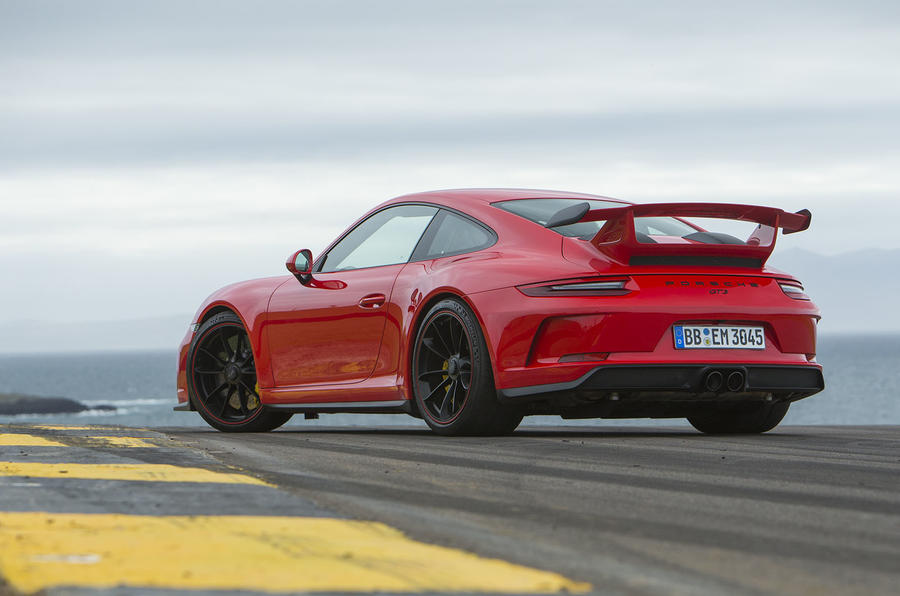
Verdict

Model tested:
Rating: 10
Used Porsche 911 GT3 2017-2021 review
Sensational 911 GT3 engages you on the road and excels on track
Good
4.0 litre engine sings all the way to 9000rpm
Sweet handling, with excellent poise, balance and agility
Can have it with a manual gearbox
Bad
High power band hard to unleash on road
Touring model is rare – and more expensive
Not much else
There’s nothing that can quite touch the 911, and this 911 in particular, for sheer entertainment on both road and circuit.
That the McLaren 720S is faster is in no doubt, but that the Porsche is better than it as a driver’s car by all useful parameters is also obvious.
Porsche 911 news
New Singer Porsche 911 packs 420bhp, 8000rpm Cosworth flat six
New Singer Porsche 911 packs 420bhp, 8000rpm Cosworth flat six
Porsche 911 GT3 is the fastest manual car at the Nurburgring
Porsche 911 GT3 is the fastest manual car at the Nurburgring
Porsche 911 Carrera S updated with 473bhp and Turbo-inspired look
Porsche 911 Carrera S updated with 473bhp and Turbo-inspired look
How Manthey gave the 911 GT3 RS 1000kg of downforce
How Manthey gave the 911 GT3 RS 1000kg of downforce
At any speeds, at all speeds, the 911’s ride is composed, the steering deliciously communicative and yet free from unwanted feedback, and the engine, transmission and brakes entirely intuitive.
In sum, no other car presents the depth of its engineering to you, as a driver, and asks you to feel it, and experience it.



